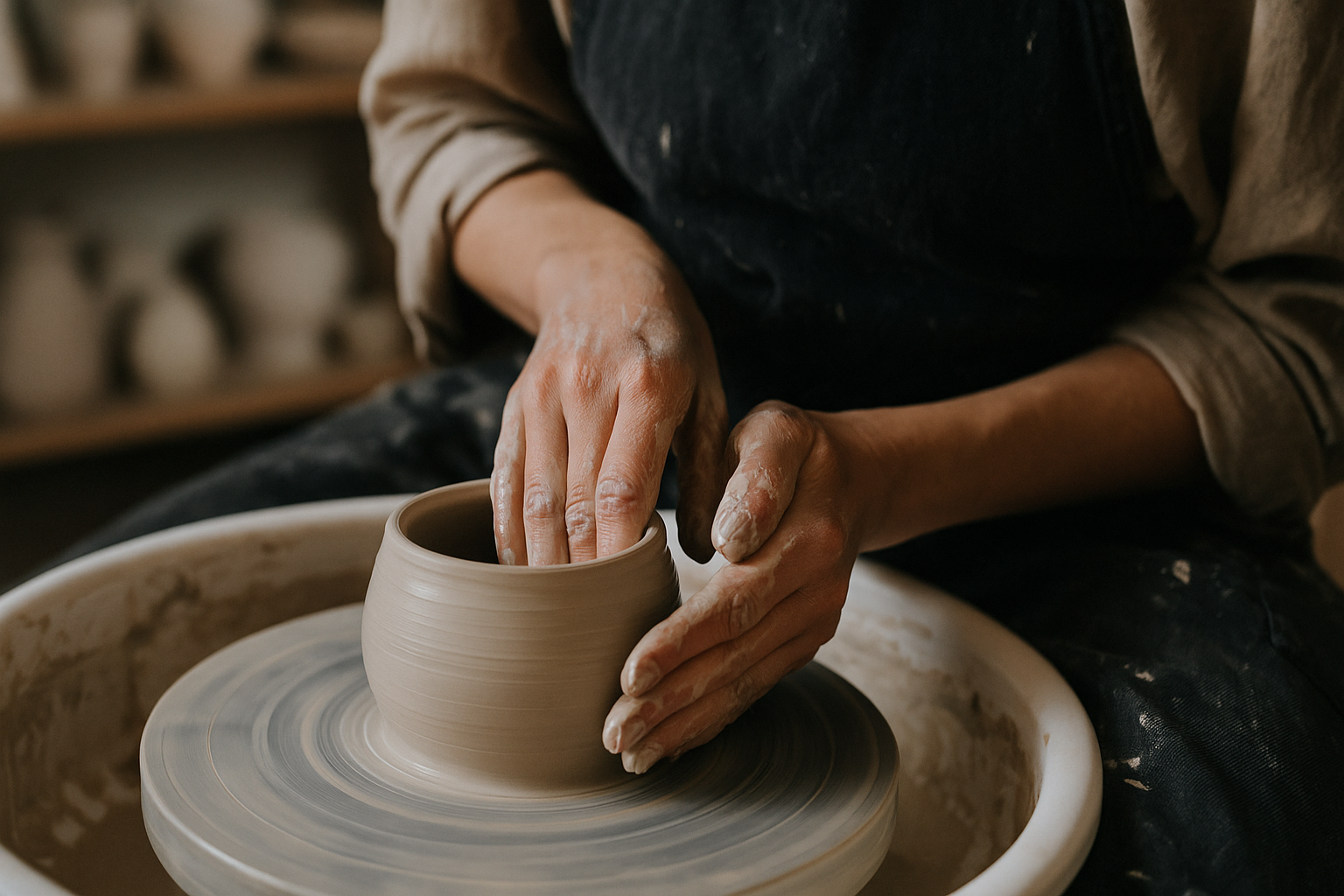How to Recognize Handmade Ceramics (and Why You Should Care) *
*A guide for curious eyes and conscious minds
In a world obsessed with fast – fast fashion, fast food, fast everything – choosing something handmade is almost a radical act. It means slowing down. Looking closely. Choosing wisely.
Take ceramics, for example. Real ceramics. The kind made by human hands in studios that smell of earth and fire. We’re not talking about factory-stamped plates made “somewhere far away,” but about objects that are beautifully imperfect—just like all things worth loving.
How to tell if a ceramic piece is handmade?
Look at the details: subtle irregularities in the glaze, slight variations in shape, the drips and brushstrokes—these are the fingerprints of craftsmanship. Industrial ceramics, in contrast, are... well, perfectly boring.
Touch it: Handmade ceramics don’t aim for imperfection—they aim for character. Each variation is the trace of a skilled hand, not a flaw. True artisans pursue perfection, too—just not the kind made by machines.
Feel the weight: the right kind of heft, like a well-bound book or a glass of proper wine. Not too light. Not too sterile.
Florence Factory Tip: Always check the bottom
Yes, the bottom of a cup. It might be the least visible part, but it tells the most revealing story. A finely crafted base often features a raised ring or a gently concave surface. Why? To prevent heat from transferring to the surface it rests on, and to avoid slipping when condensation appears.
The bottom also reveals technical mastery: a flawless finish is the sign of a perfect kiln firing. And often, you'll find the artisan’s signature or stamp—because real makers take pride in every centimeter of their work, even the ones no one sees.
But recognizing isn’t enough. You have to choose.
Choosing handmade ceramics means supporting an entire ecosystem:
Environmental, because small-scale production is more sustainable and often uses local materials.
Social, because behind each piece there’s a person—not a production line.
Economic, because buying craft keeps real jobs, real skills, and real identity alive.
Florence knows this better than anyone.
Once, its streets weren’t only filled with gelato and selfie sticks. There were workshops, pigments, the scent of leather, and the rhythm of hammers. Artisans were not an aesthetic—they were the city’s beating heart.
Today, every time a workshop closes, Florence loses a piece of itself. It becomes more postcard than place.
That’s why Florence Factory exists: to protect and celebrate the living heritage that makes this city more than a museum.
Our ceramics? Carefully selected. Always.
Every piece we choose is:
✔️ Handmade in Tuscany
✔️ Crafted with exceptional skill and intention
✔️ Beautiful in a way that’s both refined and bold
✔️ Contemporary—not rustic, not nostalgic, but deeply now
✔️ Created with respect for environmental sustainability and low-impact processes
Supporting craft isn’t about the past. It’s about designing a better, slower, more meaningful future.

